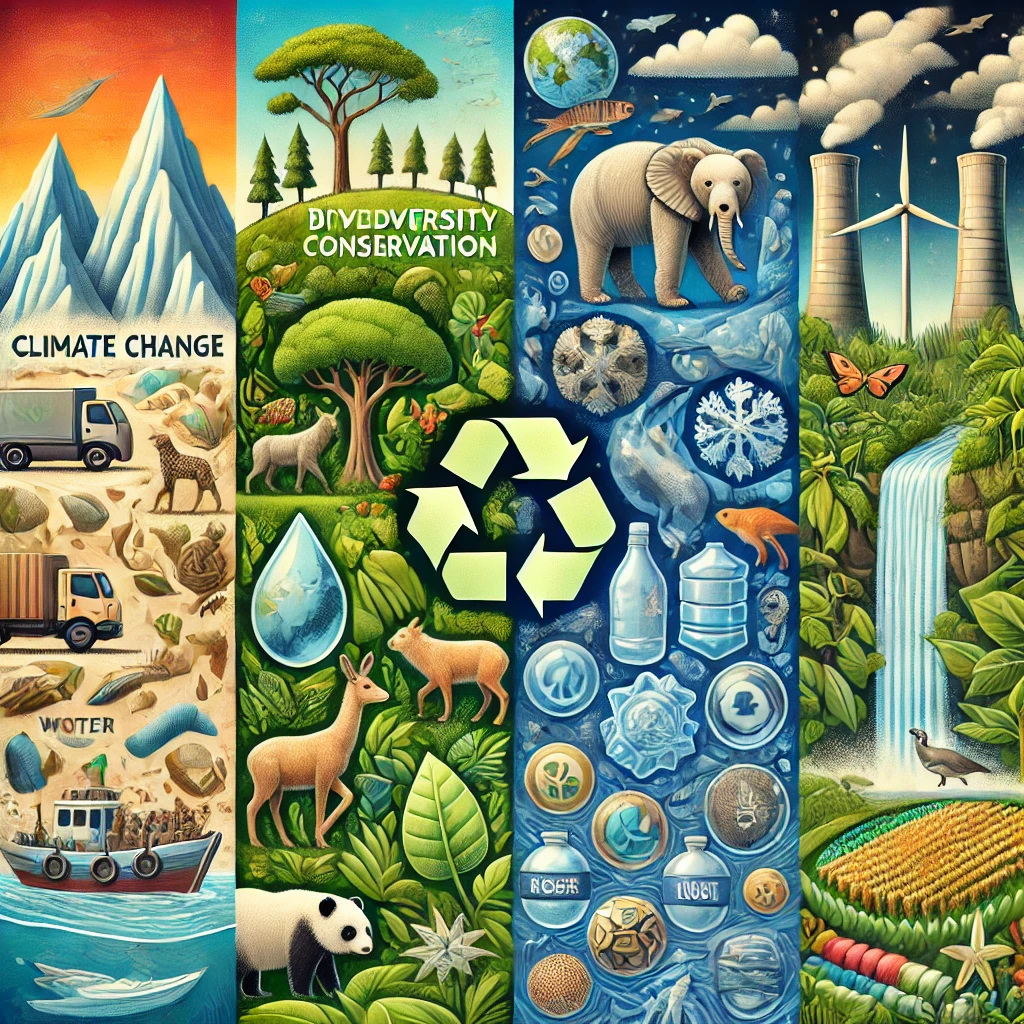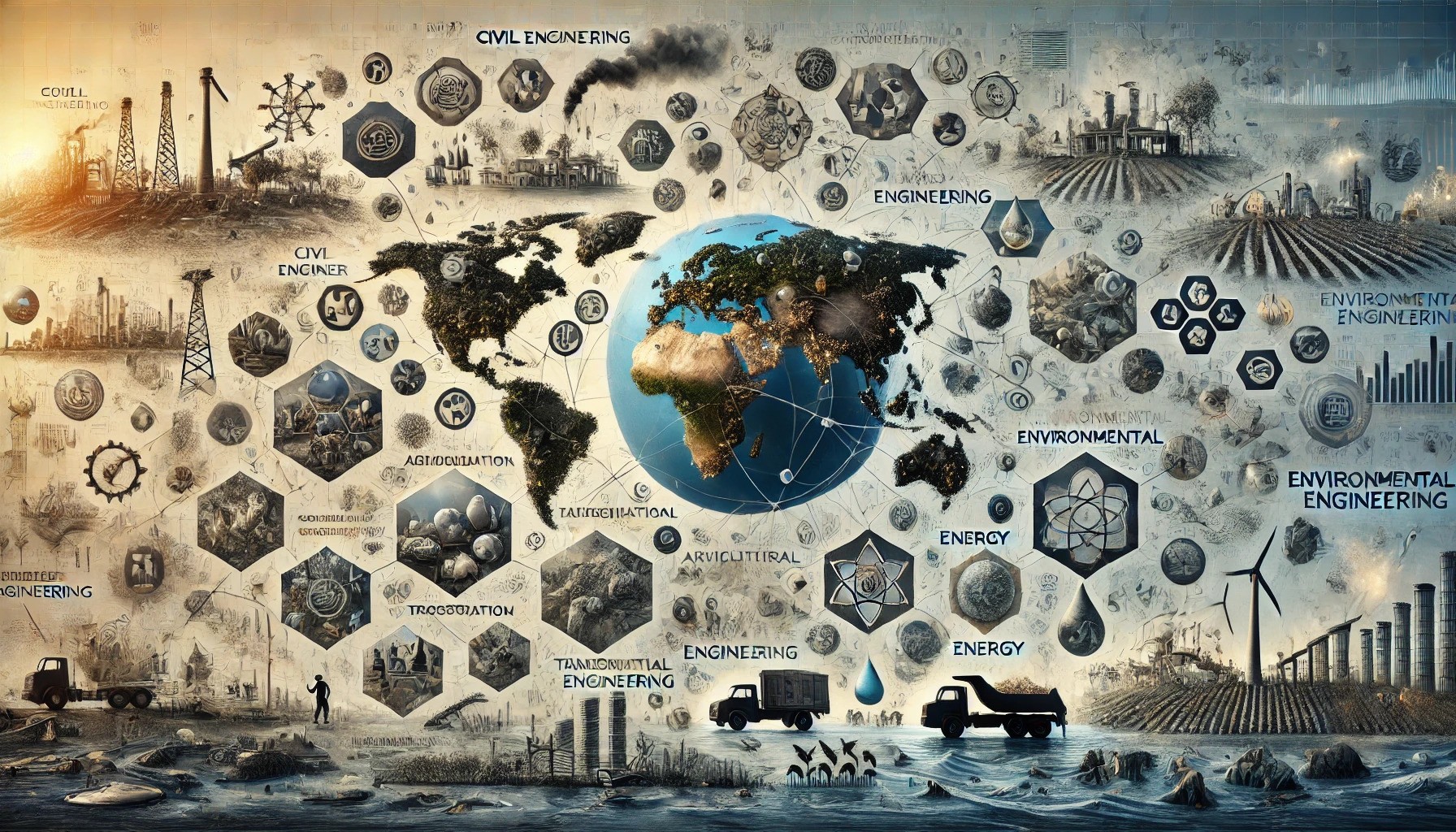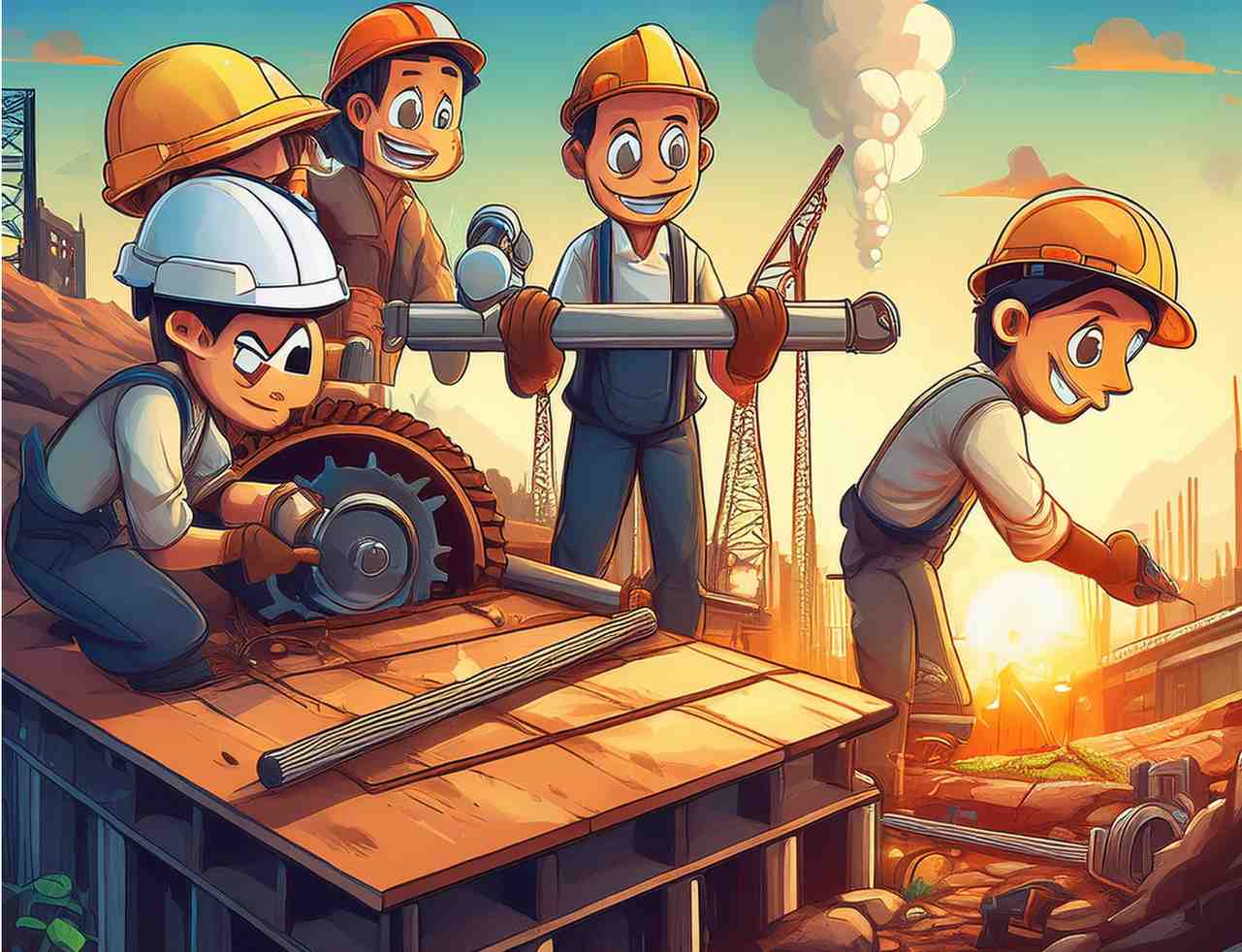User Ideas / Prospects
.jpeg)
Cities
sizzle during scorching summer months. Urban areas have a phenomenon called the
urban heat island effect, where temperatures shoot up much higher than the
surrounding rural areas. This significant temperature difference is caused by
several factors, including extensive use of concrete, asphalt, and other
heat-absorbing materials. These materials trap solar radiation, releasing it
back into the atmosphere as heat, which intensifies the urban heat island
effect.
Fortunately,
a thriving solution exists for this urban menace: green roofs. A rooftop
partially or totally covered with vegetation, a green roof brings much
environmental and economic good to any urban location, including mitigating
urban heat islands.
How Do Green
Roofs Mitigate Urban Heat?
The
green roof functions by the natural process of evapotranspiration. Water
absorbed through the roots of plants is released through the leaves of the
plants into the atmosphere in the form of vapor. It cools just like how the
human body does through sweating.
A
two-pronged attack on the urban heat island:
●
Reduced Absorption of Solar Heat: Since green roofs possess
vegetation, that would have absorbed the sun if it had occurred on an average
rooftop. Hence, there is a diminished amount of radiant heat into the ambient
atmosphere.
●
Evapotranspiration in Cooling: Already discussed, the fact that plants
allow for evapotranspiration for temperature regulation contributes to this
cooling action. Lush greenery covering green roofs produces a huge quantity of
evapotranspiration effect.
The Measurable
Effect of Green Roofs
Studies
have conclusively shown that green roofs reduce urban heat islands. Some of the
examples include:
●
Ambient Air Temperature Reduction: Green roofs can lower ambient air
temperatures by 2-6 degrees Celsius in cities.
●
Energy Savings: Green roofs reduce the cooling effect and subsequently
reduce the energy consumption in buildings. Studies show that green roofs
decrease the need for air conditioning by 20-50%, thereby saving a lot of
energy.
●
Beyond Temperature Reduction: The Holistic Benefits of Green Roofs
The
benefits of green roofs go much beyond mitigating urban heat islands. A green
roof has a whole combination of environmental benefits and economic advantages:
●
Improved Air Quality: Green roofs act as natural filters absorbing air
pollutants and emitting clean oxygen. With this, air quality in urban areas
improves.
●
Enhanced Stormwater Management: Green roofs absorb rainwater, reducing
stormwater runoff and lessening the burden on drainage systems.
●
Habitat Creation: Green roofs provide valuable habitat for pollinators
such as bees and butterflies, promoting biodiversity in urban environments.
●
Increased Building Insulation: The vegetation layer on green roofs
acts as an insulator, reducing heat transfer in both summer and winter. This
can contribute to lower energy bills throughout the year.
●
Elegance: Green roofs can transform the dull, dead rooftops into green
spaces that add a vibrancy to an otherwise dreary urban landscape.
Thinking of
installing a Green Roof?
If
you are interested in green roofs and think it might work for your building,
here are some resources to get you started:
Engineer’s Heaven: This website is a good source for engineers and building professionals
of Environmental Engineering. It
gives a comprehensive overview of green roofs, including design considerations,
construction techniques, and maintenance requirements.
Investing in a
Sustainable Future Greenroofs are among the most feasible solutions to overcome the urban
heat island challenge. We can then create cooler and more sustainable cities
with improved air quality, stormwater management, and biodiversity, all by
making use of natural power. We should embrace green roofs and open the way
toward a greener, healthier future for our urban areas.
(Disclaimer: This statistics could be different in different part of World and Different timeline. this statistics has been generated based on data available till 2025 or relavant time span.)

Why It’s Critical: Climate change is accelerating, with 2023 marking one of the hottest years on record, and some regions are facing unprecedented heat waves, droughts, and natural disasters. If global temperatures rise by 2.7°C by the century’s end, we’ll experience catastrophic changes, from coastal cities going underwater to severe agricultural disruption.
Solutions Needed and Examples:
- Decarbonizing Energy Sources: The International Renewable Energy Agency (IRENA) notes that renewables could supply up to 86% of global electricity by 2050. Example: Denmark has committed to generating 100% of its electricity from renewables by 2030.
- Carbon Capture and Storage (CCS): CCS can capture up to 90% of CO₂ emissions from sources like power plants. Example: The Boundary Dam CCS Project in Canada captures 1 million tons of CO₂ annually.
- Energy Efficiency Measures: Energy efficiency improvements could halve energy demand growth. Example: Japan has adopted energy-efficient building codes and appliance standards that have cut down energy use significantly.
- Sustainable Land Use: Forest preservation is vital, as deforestation contributes around 10% of annual GHG emissions. Example: Costa Rica has reversed deforestation, doubling its forest cover while promoting eco-tourism and sustainable land use.
Why It’s Critical: The Earth is experiencing its sixth mass extinction, with species vanishing at a rate 100 to 1,000 times faster than normal due to human activity. This not only reduces ecosystem resilience but also affects our food systems, water sources, and the stability of natural cycles.
Solutions Needed and Examples:
- Protected Natural Habitats: Protecting natural areas helps maintain biodiversity and prevent species loss. Example: The Amazon Rainforest hosts 10% of known species; countries like Brazil have created protected areas, although illegal deforestation remains a challenge.
- Restoration Projects: Restoration initiatives help recover damaged ecosystems. Example: China’s "Great Green Wall" reforestation project has planted over 66 billion trees, aimed at reversing desertification.
- Wildlife Corridors: Corridors allow species to migrate safely between habitats, which is crucial for genetic diversity. Example: The Yellowstone to Yukon (Y2Y) initiative protects migration corridors for large mammals across Canada and the U.S.
- Reducing Wildlife Exploitation: Curbing the wildlife trade and hunting can protect endangered species. Example: Kenya’s strict anti-poaching laws have reduced the poaching of elephants and rhinos, helping populations stabilize.
Why It’s Critical: Freshwater scarcity is already a reality for over 2 billion people, and climate change worsens the situation with increased droughts and extreme weather events. Without sustainable management, water shortages could lead to food crises and geopolitical conflict.
Solutions Needed and Examples:
- Improving Water Efficiency: Improving irrigation efficiency in agriculture can reduce water use by up to 30%. Example: Israel’s drip irrigation technology has revolutionized agriculture, reducing water use while boosting crop yields.
- Protecting Water Bodies: Protecting rivers, lakes, and groundwater from pollution is crucial for clean water supplies. Example: The Ganges River Cleanup in India addresses industrial waste and sewage, critical for millions dependent on the river.
- Desalination and Recycling Innovations: Desalination and recycling offer alternative water solutions. Example: Singapore’s NEWater system recycles wastewater, meeting 40% of the nation’s water needs.
- Integrated Water Resource Management (IWRM): Managing water resources collaboratively across regions ensures sustainable use. Example: The Mekong River Commission coordinates sustainable water usage among Southeast Asian countries sharing the river.
Why It’s Critical: Pollution from waste, particularly plastic, is devastating our oceans and land, with plastics taking centuries to decompose. Toxic waste from electronics and industry is also a major health hazard. If current trends continue, there could be more plastic in the ocean than fish by 2050.
Solutions Needed and Examples:
- Reducing Plastic Use: Reducing single-use plastic can prevent it from polluting oceans and harming marine life. Example: Rwanda banned plastic bags in 2008 and became one of the cleanest countries in Africa.
- Waste-to-Energy and Recycling Infrastructure: Efficient waste management systems reduce landfill use and recover valuable materials. Example: Sweden’s waste-to-energy plants convert almost 99% of household waste into energy.
- Toxic Waste Regulation: Enforcing stricter industrial regulations can prevent harmful chemicals from polluting ecosystems. Example: The European Union’s REACH regulation ensures strict monitoring of chemical usage.
- Consumer Awareness Campaigns: Educating people about sustainable practices can reduce waste and pollution. Example: South Korea’s recycling programs are highly effective, with citizens participating actively due to government-led education campaigns.
Why It’s Critical: Current agricultural practices are a major driver of environmental degradation, from deforestation to excessive water use and pollution. Agriculture accounts for 10-12% of global GHG emissions and is a leading cause of habitat loss and soil degradation. Without sustainable methods, food production systems could collapse under population pressure and climate impacts.
Solutions Needed and Examples:
- Regenerative Agriculture: Regenerative practices can enrich soil, reduce carbon emissions, and improve biodiversity. Example: The Rodale Institute in the U.S. promotes regenerative agriculture, showing it can increase yields while lowering environmental impact.
- Reducing Food Waste: Up to 30% of food is wasted globally, contributing to 8-10% of GHG emissions. Example: France implemented strict policies against food waste, including requiring supermarkets to donate unsold food to charities.
- Alternative Proteins and Vertical Farming: Reducing reliance on livestock by adopting alternative proteins and efficient farming methods can cut emissions and land use. Example: Singapore has invested heavily in vertical farms, producing fresh vegetables locally with minimal land.
- Agroforestry and Mixed Cropping: Integrating trees and diverse crops enriches soil, conserves water, and protects biodiversity. Example: In Kenya, agroforestry practices, like planting trees with crops, improve yields and provide firewood without harming forests.
Addressing these urgent environmental problems requires commitment at every level—from individuals to governments and corporations. Each solution example shows the impact these measures can have if they are implemented broadly, proving that a sustainable future is achievable with immediate, coordinated action.
In recent past years world have seen very fast paced engineering innovation how ever innovation happened into very particular engineering fields weather some very crucial engineering fields has been overlooked. here just some reference that i think overlooked Engineering fields where innovation is urgently needed but often overlooked with some examples and hypothesis.
- Missed Innovation Example: Aging infrastructure (roads, bridges, dams) in many developed and developing nations remains outdated and unsafe. Technologies for sustainable, earthquake-resistant buildings or smart urban infrastructure (integrated with IoT) are underdeveloped in many regions.
- Need for Innovation:
- Smart cities with energy-efficient, sustainable infrastructure.
- Green construction technologies that reduce the environmental impact of building materials.
- Resilient infrastructure to withstand climate change-induced challenges such as flooding and extreme weather.
- Consequences:
- Deteriorating infrastructure, leading to increased maintenance costs, accidents, and failures (e.g., bridge collapses, unsafe buildings).
- Inadequate urban planning results in traffic congestion, pollution, and poor living conditions.
- Lack of sustainable and resilient construction exacerbates the impact of natural disasters like earthquakes, floods, and hurricanes.
- Missed Innovation Example: Despite growing food insecurity, many areas lack investment in precision farming technologies, such as automated irrigation systems or drones for crop monitoring. Developing countries, in particular, have missed the opportunity to advance farming practices that could increase food production with limited resources.
- Need for Innovation:
- Automation in agriculture: robotics and AI-driven machines for planting, harvesting, and monitoring crops.
- Water-efficient farming: innovative irrigation technologies to maximize water usage in drought-prone areas.
- Climate-resilient agriculture: designing farming systems that can withstand changing weather patterns and environmental stressors.
- Consequences:
- Increased food insecurity and reduced agricultural productivity due to inefficient farming practices.
- Overuse of water and land resources leading to soil degradation, deforestation, and biodiversity loss.
- Vulnerability to climate change as farming systems are not equipped to handle changing weather patterns and environmental stresses.
- Missed Innovation Example: The management of wastewater and air pollution is still suboptimal in many urban areas, especially in developing countries. Technologies for efficient water recycling, waste-to-energy plants, or air purification systems have not been widely adopted, even though they are needed to fight pollution and climate change.
- Need for Innovation:
- Water treatment systems: advanced filtration and purification technologies to ensure clean water supplies.
- Sustainable waste management: converting waste into renewable energy sources or biodegradable materials.
- Air quality improvement: scalable technologies to reduce carbon emissions and particulate matter in urban environments.
- Consequences:
- Worsening pollution levels (water, air, and soil), leading to public health crises such as respiratory diseases and contaminated drinking water.
- Insufficient waste management leads to increased landfills, environmental degradation, and lost opportunities for recycling or energy recovery.
- Poor climate resilience exacerbates the effects of climate change, such as rising sea levels, extreme weather events, and global warming.
- Missed Innovation Example: Mining practices in many countries continue to rely on traditional, destructive methods that cause significant environmental harm. Technologies for more sustainable resource extraction, such as using bio-leaching or automated mining systems, have not been fully implemented.
- Need for Innovation:
- Sustainable mining: reduced environmental impact and more efficient resource extraction processes.
- Mineral recycling technologies: reclaiming valuable materials from industrial waste.
- Energy-efficient smelting and refining processes to reduce emissions and lower the energy consumption in metallurgical operations.
- Consequences:
- Unsustainable mining practices result in environmental destruction, including deforestation, water contamination, and habitat loss.
- Depletion of non-renewable resources without the development of more sustainable extraction or recycling technologies.
- Increased carbon emissions and energy waste in metallurgical processes due to outdated technologies.
- Missed Innovation Example: Public transportation systems in many cities remain outdated, underfunded, and inefficient. The integration of electric buses, autonomous vehicles, or hyperloop systems is still rare, even though these technologies could significantly reduce urban congestion and carbon emissions.
- Need for Innovation:
- Autonomous transport systems: self-driving cars and public transportation that reduces traffic accidents and increases efficiency.
- Electric and sustainable transportation: expansion of electric vehicle infrastructure (charging stations, smart grids) and the use of green energy in transportation networks.
- High-speed rail and hyperloop: developing rapid, sustainable intercity transportation systems.
- Consequences:
- Growing urban congestion and traffic-related air pollution, contributing to public health issues and economic losses.
- Increased reliance on fossil fuels due to inadequate development of electric and sustainable transportation systems, worsening climate change.
- Lack of effective public transportation results in social inequality, as low-income populations suffer from limited access to affordable transport.
- Missed Innovation Example: In many regions, especially in developing countries, water distribution systems are inefficient, leading to significant water loss through leaks. Additionally, technologies for drought management, such as large-scale water desalination or smart water grids, are still underdeveloped.
- Need for Innovation:
- Smart water management systems: sensors, AI, and IoT-based systems that optimize water distribution and reduce wastage.
- Desalination technologies: energy-efficient systems for converting seawater into freshwater.
- Flood prevention: designing advanced flood management systems to control and mitigate urban flooding caused by climate change.
- Consequences:
- Water scarcity and inefficient use of water resources, particularly in drought-prone regions, leading to social unrest and economic disruption.
- Urban flooding and poor stormwater management causing property damage, displacement, and increased mortality rates in vulnerable areas.
- Insufficient access to clean water, contributing to waterborne diseases and exacerbating public health challenges in developing regions.
- Missed Innovation Example: The textile industry is one of the most resource-intensive sectors, yet innovations in sustainable fabrics and environmentally friendly production processes are still limited. Fast fashion continues to contribute to significant waste and pollution.
- Need for Innovation:
- Eco-friendly textiles: developing biodegradable or recyclable fabrics that reduce environmental impact.
- Waterless dyeing technologies: reducing the massive water consumption and chemical use in fabric production.
- Circular textile economy: designing clothes that are easy to recycle or repurpose, reducing textile waste in landfills.
- Consequences:
- Massive environmental pollution due to toxic chemicals used in dyeing processes and large-scale textile waste from fast fashion.
- Over-exploitation of natural resources, such as water and cotton, leading to ecological degradation.
- Missed opportunities for a circular economy in the textile sector, contributing to a growing waste crisis as millions of tons of textiles are sent to landfills each year.
- Missed Innovation Example: In many regions, especially developing countries, there is a lack of affordable medical devices or prosthetics that are accessible to those in need. Technologies for low-cost, 3D-printed medical devices could revolutionize healthcare but remain underdeveloped in underserved markets.
- Need for Innovation:
- Affordable diagnostics: low-cost medical imaging and diagnostic devices for remote or low-income areas.
- Wearable health tech: biosensors and smart devices that monitor health conditions in real time.
- 3D-printed prosthetics and implants: affordable and customizable solutions for those who need prosthetic limbs or medical implants.
- Consequences:
- Lack of affordable, accessible medical technologies results in unequal access to healthcare, particularly in low-income regions.
- Missed opportunities to develop life-saving devices or treatments, such as affordable prosthetics or advanced diagnostic tools, which could improve quality of life.
- Overburdened healthcare systems, unable to cope with increasing demand for effective, low-cost medical solutions.
- Missed Innovation Example: The production of plastics and other petroleum-based chemicals remains largely unsustainable, contributing to massive environmental degradation. Innovations in biodegradable plastics or carbon capture technologies in chemical processes are still insufficiently developed.
- Need for Innovation:
- Green chemistry: developing sustainable processes for producing chemicals with minimal environmental impact.
- Carbon capture and utilization: technologies to capture CO₂ emissions from chemical plants and repurpose them.
- Biodegradable materials: alternatives to plastics and other harmful materials, reducing pollution and improving waste management.
- Consequences:
- Continued reliance on non-biodegradable plastics and harmful chemicals contributes to environmental degradation, particularly ocean pollution and microplastic accumulation.
- Higher levels of industrial emissions, leading to global warming and severe health impacts due to air pollution.
- Missed opportunities for developing sustainable chemical processes, hindering progress toward reducing the carbon footprint of industries.
- Missed Innovation Example: Although there is global recognition of the need for clean energy, many regions continue to rely on outdated, fossil-fuel-based energy systems. Innovations in energy storage, grid management, and renewable energy infrastructure are often underfunded or underdeveloped in critical areas.
- Need for Innovation:
- Energy storage solutions: efficient batteries and storage technologies to support renewable energy use.
- Smart grids: intelligent, flexible energy distribution systems to accommodate renewable sources like solar and wind.
- Sustainable energy generation: scaling up of renewable energy projects, especially in regions heavily dependent on coal or oil.
- Consequences:
- Continued dependence on fossil fuels results in worsening climate change, environmental degradation, and geopolitical conflicts over oil and gas resources.
- Energy poverty in remote or underdeveloped regions due to a lack of innovation in affordable and decentralized renewable energy systems.
- Unstable energy grids that cannot integrate renewable energy sources efficiently, leading to blackouts and unreliable energy supplies.
Overall Societal and Environmental Impact
- Economic stagnation: Missed engineering innovation leads to inefficiencies, higher costs, and lost economic opportunities in key industries such as agriculture, manufacturing, and energy.
- Social inequality: Uneven access to modern technologies and solutions disproportionately affects low-income populations, creating deeper societal divides.
- Environmental degradation: The lack of sustainable technologies exacerbates issues such as climate change, resource depletion, and biodiversity loss, threatening global ecosystems and the well-being of future generations.
By missing innovations in these critical engineering fields, society risks falling behind on addressing some of the most pressing challenges of our time, from food security and climate change to health access and sustainable infrastructure. These areas deserve greater attention, investment, and cross-disciplinary collaboration to drive the necessary changes.
if you are interested in possible cause and solution of this issue follow the link below for related article.
how life would be impacted without engineers from various specialized fields
- Infrastructure: Civil engineers design, build, and maintain essential infrastructure like roads, bridges, dams, and buildings. Without them, our transportation networks would be rudimentary, buildings less safe, and urban planning chaotic.
- Water Resources: Civil engineers also handle water supply and sanitation systems. Without them, clean water would be scarce, and sanitation could be a major public health crisis.
- Urban Development: City planning and the development of sustainable communities would be hindered, leading to overcrowded and poorly organized living spaces.
- Machinery and Automation: Mechanical engineers design and develop machines used in industries, transport, and everyday life. Without them, there would be no cars, trains, or airplanes, and industrial processes would be inefficient and labor-intensive.
- Energy Systems: Mechanical engineers also work on power generation systems like turbines and engines. Without them, our ability to generate and efficiently use energy would be severely limited.
- Consumer Products: From home appliances to fitness equipment, many everyday items would be unavailable or far less effective.
- Power Generation and Distribution: Electrical engineers design and maintain the systems that generate and distribute electricity. Without them, we’d lack reliable power, leading to a return to pre-electricity lifestyles.
- Communication Systems: Electronics engineers develop the technology behind phones, computers, and the internet. Without their work, global communication would be nearly impossible.
- Automation and Control Systems: Modern factories and homes rely on automation for efficiency. Without these engineers, production and daily life would be far less efficient.
- Computing Devices: Computer engineers are behind the development of hardware and software that powers computers, smartphones, and other digital devices. Without them, we’d be without modern computing, crippling almost every industry.
- Networking and Internet: They also design the systems that make the internet possible. Without these, global connectivity and access to information would be severely restricted.
- Artificial Intelligence and Robotics: Advancements in AI and robotics, which are revolutionizing industries, wouldn’t exist without computer engineers.
- Pharmaceuticals: Chemical engineers are crucial in the production of medicines. Without them, the development and mass production of life-saving drugs would be impossible.
- Petroleum and Energy: They also work in refining petroleum and developing alternative energy sources. Without them, fuel would be less accessible, and energy innovation would stagnate.
- Food Processing: The food we eat often requires processing to be safe and palatable. Chemical engineers ensure that food products are safe, nutritious, and efficiently produced.
- Aviation: Aerospace engineers design and develop aircraft. Without them, air travel wouldn’t exist, drastically limiting global mobility.
- Space Exploration: They are also responsible for spacecraft and satellite technology. Without aerospace engineers, humanity’s exploration of space and our understanding of the universe would be non-existent.
- Defense: Many defense systems, including missiles and surveillance drones, rely on aerospace engineering. Without this expertise, national security could be compromised.
- Medical Devices: Biomedical engineers design and develop medical devices like pacemakers, MRI machines, and prosthetics. Without them, diagnosing and treating many conditions would be much harder or impossible.
- Tissue Engineering: Advances in tissue engineering and regenerative medicine are spearheaded by biomedical engineers. Without them, treatments that restore or replace damaged tissues wouldn’t be available.
- Healthcare Innovation: The continuous improvement of healthcare technologies, leading to better patient outcomes, depends heavily on biomedical engineers.
- Pollution Control: Environmental engineers develop systems to reduce pollution and manage waste. Without them, air, water, and soil contamination would be far worse, endangering human health and ecosystems.
- Sustainable Development: They also work on projects that aim to balance development with environmental protection. Without their expertise, sustainability efforts would falter, leading to resource depletion and ecological crises.
- Renewable Energy: Environmental engineers are key in developing and implementing renewable energy solutions, crucial for combating climate change. Without them, the transition away from fossil fuels would be significantly slower.
- Manufacturing Efficiency: Industrial engineers optimize production processes, ensuring that goods are made efficiently and cost-effectively. Without them, manufacturing would be slower, more expensive, and less reliable.
- Supply Chain Management: They also manage supply chains, ensuring that products are delivered on time and at the right cost. Without industrial engineers, logistics would be chaotic, leading to shortages and inefficiencies.
- Quality Control: Ensuring that products meet quality standards is another key role. Without industrial engineers, product defects would be more common, affecting safety and customer satisfaction.
- Advanced Materials: Materials engineers develop new materials with specific properties for various applications. Without them, innovations in electronics, construction, and healthcare (like biodegradable implants) would be impossible.
- Metallurgy: They also work on the extraction and processing of metals. Without them, we would lack the materials needed for building infrastructure, manufacturing tools, and producing electronics.
- Nanotechnology: Advancements in nanotechnology, leading to innovations in fields like medicine, electronics, and energy, are driven by materials engineers. Without them, many cutting-edge technologies would not exist.
- Farm Equipment: Agricultural engineers design and develop machinery used in farming. Without them, modern farming methods wouldn’t be possible, leading to less food production and higher food prices.
- Irrigation and Water Management: They also design systems for efficient water use in agriculture. Without these systems, crop yields would be lower, and water resources could be wasted.
- Sustainable Farming Practices: Agricultural engineers are involved in developing sustainable farming practices to ensure food security. Without them, agriculture would struggle to meet the demands of a growing population.
- Shipbuilding: Marine engineers design and maintain ships and submarines. Without them, maritime trade and naval defense would be greatly diminished.
- Offshore Engineering: They also work on offshore structures like oil rigs and wind farms. Without marine engineers, exploiting marine resources and developing offshore energy would be nearly impossible.
- Oceanographic Technology: Marine engineers contribute to technologies that explore and monitor the ocean. Without their work, our understanding and stewardship of marine environments would be limited.
- Soil and Rock Mechanics: Geotechnicalengineers study the behavior of earth materials. Without them, constructing stable foundations for buildings, bridges, and tunnels would be much riskier.
- Landslide and Earthquake Mitigation: They also develop solutions to mitigate landslides and earthquake impacts. Without geotechnical engineers, many areas would be unsafe for habitation.
- Mining Engineering: Extraction of minerals and resources from the earth is guided by geotechnical principles. Without these engineers, mining would be far less efficient and more dangerous.
Without engineers from these specialized faculties, the world would lack the technological advancements, infrastructure, and innovations that make modern life possible. Society would struggle with basic needs like shelter, transportation, healthcare, and communication, resulting in a world that is less safe, less connected, and less prosperous.
Sustainability is a critical consideration across various fields of engineering due to the pressing need to balance development with environmental, economic, and social responsibilities. Here are several key areas of engineering where sustainability is a major focus:
- Sustainable Infrastructure: Designing and constructing buildings, bridges, roads, and other infrastructure to minimize environmental impact and maximize resource efficiency.
- Green Building: Implementing eco-friendly materials, energy-efficient systems, and sustainable construction practices.
- Water Management: Developing systems for efficient water use, wastewater treatment, and stormwater management to preserve water resources.
- Energy Efficiency: Designing machines and mechanical systems that use less energy and produce fewer emissions.
- Renewable Energy Technologies: Developing systems for wind, solar, hydro, and geothermal energy production.
- Sustainable Manufacturing: Creating manufacturing processes that reduce waste, use recycled materials, and minimize energy consumption.
- Energy Systems: Designing and improving the efficiency of electrical grids, renewable energy integration, and energy storage systems.
- Electronics Recycling: Developing methods to recycle electronic waste and reduce the environmental impact of electronic devices.
- Smart Grids: Implementing advanced grid technology to optimize electricity distribution and consumption.
- Green Chemistry: Designing chemical processes and products that reduce or eliminate hazardous substances.
- Sustainable Materials: Developing biodegradable and recyclable materials.
- Process Optimization: Improving industrial processes to use fewer resources and generate less waste.
- Pollution Control: Developing technologies and methods to reduce pollution and clean up contaminated environments.
- Waste Management: Designing systems for recycling, composting, and reducing landfill use.
- Resource Recovery: Creating processes to recover valuable resources from waste streams.
- Sustainable Transportation Systems: Designing and promoting public transportation, cycling, and pedestrian infrastructure.
- Electric and Hybrid Vehicles: Developing cleaner, more efficient vehicle technologies.
- Logistics Optimization: Improving supply chain and transportation logistics to reduce emissions and energy use.
- Energy-efficient Buildings: Designing buildings that minimize energy consumption through efficient HVAC systems, insulation, and passive solar design.
- Sustainable Urban Planning: Creating urban spaces that reduce environmental impact and improve quality of life.
- Renewable Energy Integration: Incorporating solar panels, wind turbines, and other renewable energy sources into building designs.
- Sustainable Materials: Developing new materials that are more environmentally friendly, such as biodegradable plastics and sustainable composites.
- Life Cycle Assessment: Evaluating the environmental impact of materials from production to disposal to promote sustainable choices.
- Recycling and Reuse: Innovating ways to recycle materials and extend their useful life.
- Sustainable Mining Practices: Developing methods to minimize environmental impact and restore ecosystems after mining operations.
- Resource Efficiency: Improving extraction techniques to use resources more efficiently and reduce waste.
- Environmental Impact Assessments: Conducting thorough assessments to understand and mitigate the impact of mining projects.
- Fuel Efficiency: Designing aircraft and spacecraft that use less fuel and produce fewer emissions.
- Sustainable Materials: Using lightweight, durable, and recyclable materials in aerospace design.
- Environmental Impact: Reducing the environmental impact of aerospace operations, including noise pollution and carbon emissions.
- Energy-efficient Computing: Developing software and systems that use less energy, such as optimizing algorithms and data centers.
- Sustainable IT Infrastructure: Designing data centers and IT infrastructure with reduced energy consumption and improved efficiency.
- Green Software Development: Creating software that promotes sustainable practices and reduces environmental impact.
In each of these areas, engineers are constantly exploring new ways to enhance sustainability, balancing technological advancement with the need to protect and preserve our environment for future generations.





.jpeg)

.jpeg)
.jpeg)

.jpeg)


.jpeg)
